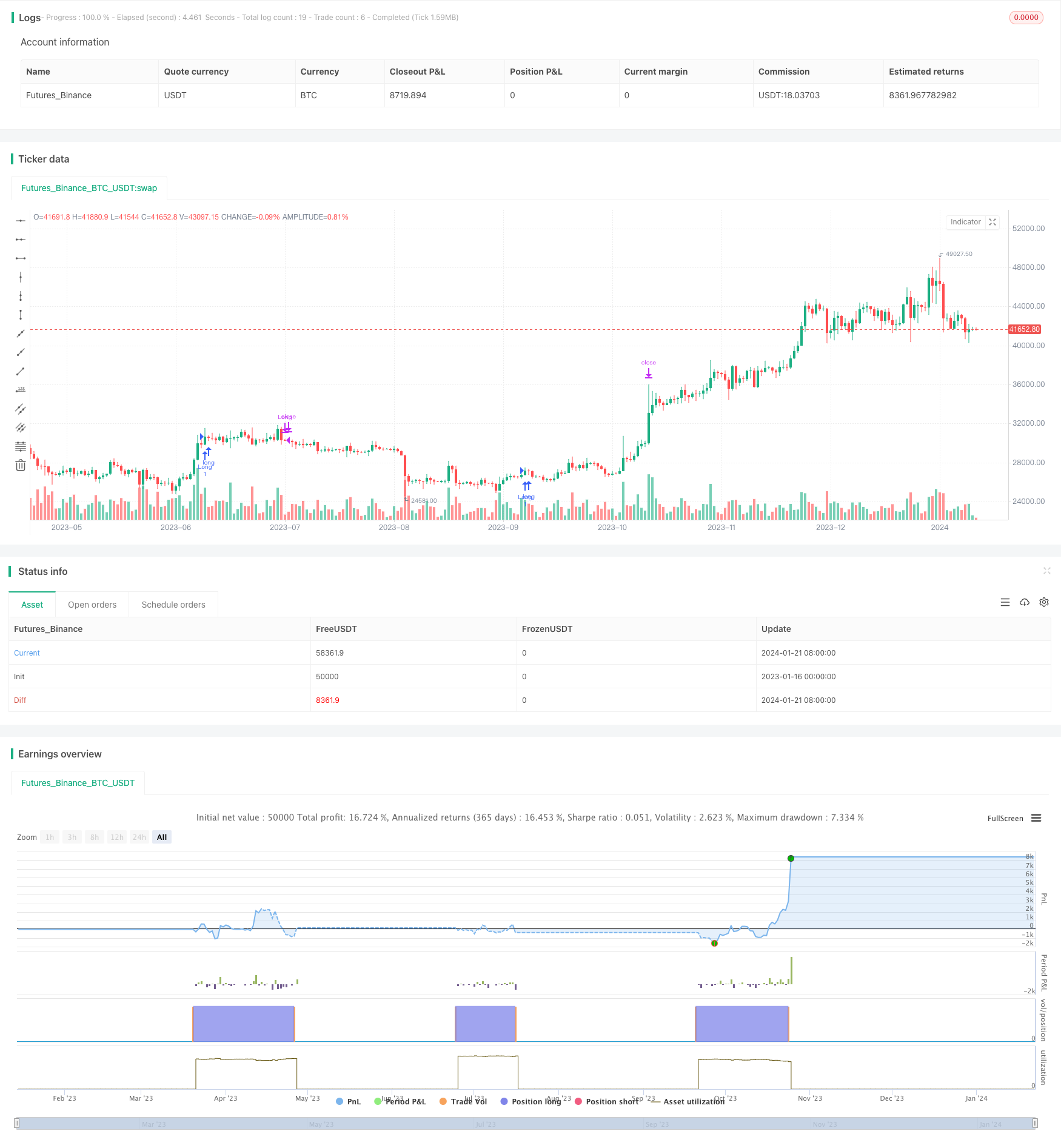
概述
本策略是一个基于移动平均线的动量策略。它通过计算不同周期的简单移动平均线,并比较其交叉情况来产生交易信号。具体来说,当短期移动平均线上穿长期移动平均线时,产生买入信号;当短期移动平均线下穿长期移动平均线时,产生卖出信号。
策略原理
该策略的核心逻辑是基于动量效应,也就是股票价格趋势的持续性。移动平均线能够有效反映股票价格变化趋势,当短期移动平均线上穿长期移动平均线时,表示股票价格开始进入上升趋势;相反,当短期移动平均线下穿长期移动平均线时,表示股票价格开始进入下降趋势。本策略就是根据这个原理产生交易信号的。
具体来说,策略中定义了一个13日简单移动平均线和一个34日简单移动平均线。在每日收盘价计算这两个移动平均线后,比较其值的大小关系。如果13日线上穿34日线,则产生买入信号,表示股票价格进入上涨趋势,应该建立多头仓位;如果13日线下穿34日线,则产生卖出信号,表示股票价格进入下跌趋势,应该清仓卖出。
策略优势
本策略最大的优势在于简单易懂,容易实现。移动平均线是最基本也最常用的技术指标之一,其原理简单,易于理解和应用。同时,移动平均线组合信号也经过长期实践被证明是有效的。
另外,本策略参数设置灵活,可以根据不同品种、市场环境进行调整。比如可以改变移动平均线的周期参数,从而调整策略的灵敏度。这为策略的优化和调整提供了空间。
风险分析
本策略最大的风险在于可能出现较多的错误信号和震荡市中被套。当价格出现大幅震荡时,移动平均线可能产生频繁的交叉,导致错误信号的出现。这时就需要调整移动平均线周期参数,过滤掉一些噪音。
另外,当行情出现较大反转时,策略的止损点可能会被突破,导致较大亏损的产生。这需要优化止损策略,并适当放宽止损幅度。
优化方向
本策略可以从以下几个方面进行优化:
优化移动平均线的周期参数,找到不同品种和市场环境下参数的最优组合
增加其他技术指标过滤,如MACD、KD等,避免在震荡行情中产生错误信号
优化和动态调整止损策略,在保证止损的同时,避免止损点过于接近,被突破的概率较大
增加仓位管理机制,比如固定量投入、仓位比例等,控制单笔交易风险
总结
本策略是一个非常经典的移动平均线交叉strategy,通过计算并比较短期和长期移动平均线的关系,产生买入和卖出信号。该策略优点是简单易懂、参数灵活,适用于初学者学习;缺点是信号可能不够稳定,在震荡市场中容易被套。通过适当的优化,仍然可以成为一个非常实用的量化策略。
/*backtest
start: 2023-01-16 00:00:00
end: 2024-01-22 00:00:00
period: 1d
basePeriod: 1h
exchanges: [{"eid":"Futures_Binance","currency":"BTC_USDT"}]
*/
//@version=3
// TODO: update strategy name
strategy("{STRATEGY NAME}", overlay=true)
// === TA LOGIC ===
//
//
// TODO: PUT YOUR TA LOGIC HERE
LONG_SIGNAL_BOOLEAN = crossover(sma(close, 13), sma(close, 34))
SHORT_SIGNAL_BOOLEAN = crossunder(sma(close, 12), sma(close, 21))
// === INPUT BACKTEST DATE RANGE ===
enableShorts = input(false, title="Enable short entries?")
FromMonth = input(defval = 5, title = "From Month", minval = 1, maxval = 12)
FromDay = input(defval = 18, title = "From Day", minval = 1, maxval = 31)
FromYear = input(defval = 2018, title = "From Year", minval = 2017)
ToMonth = input(defval = 9, title = "To Month", minval = 1, maxval = 12)
ToDay = input(defval = 1, title = "To Day", minval = 1, maxval = 31)
ToYear = input(defval = 2018, title = "To Year", minval = 2017)
start = timestamp(FromYear, FromMonth, FromDay, 00, 00) // backtest start window
finish = timestamp(ToYear, ToMonth, ToDay, 23, 59) // backtest finish window
window() => true // create function "within window of time"
// === STRATEGY BUY / SELL ENTRIES ===
// TODO: update the placeholder LONG_SIGNAL_BOOLEAN and SHORT_SIGNAL_BOOLEAN to signal
// long and short entries
buy() => window() and LONG_SIGNAL_BOOLEAN
sell() => window() and SHORT_SIGNAL_BOOLEAN
if buy()
strategy.entry("Long", strategy.long, comment="Long")
if sell()
if (enableShorts)
strategy.entry("Short", strategy.short, comment="Short")
else
strategy.close("Long")
// === BACKTESTING: EXIT strategy ===
sl_inp = input(10, title='Stop Loss %', type=float)/100
tp_inp = input(30, title='Take Profit %', type=float)/100
stop_level = strategy.position_avg_price * (1 - sl_inp)
take_level = strategy.position_avg_price * (1 + tp_inp)
strategy.exit("Stop Loss/Profit", "Long", stop=stop_level, limit=take_level)